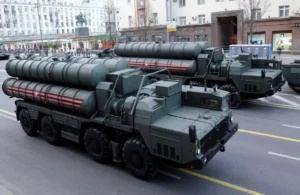In a significant step toward enhancing India’s global strategic partnerships, Raksha Mantri Rajnath Singh and Morocco’s Defence Minister Abdeltif Loudiyi signed a Memorandum of Understanding (MoU) on defence cooperation in Rabat on 22nd September 2025. The agreement marks a deepening of bilateral military engagement and reflects India’s growing defence diplomacy footprint in North Africa.
This MoU is accompanied by the announcement of a new Defence Wing at the Indian Embassy in Rabat, aimed at institutionalising military exchanges, joint training, and industrial partnerships. For India, it is a part of broader efforts to expand strategic ties in Africa, while for Morocco, it opens new avenues for defence modernization through Indian technology and expertise.
Key Highlights of the India–Morocco Defence MoU
Institutional Framework for Defence Cooperation
The newly signed MoU provides a formal structure for defence engagement between the two countries. It outlines provisions for,
- Joint military exercises and training programs
- Defence industry collaboration, including co-development and co-production
- Capacity building in strategic areas such as military medicine and peacekeeping
- Exchange of experts and military personnel to promote interoperability and trust
This structured approach is expected to bring consistency and long-term vision to bilateral defence ties.
Focus Areas of Strategic Collaboration
Both countries agreed to intensify cooperation in several critical areas, including,
- Counter-terrorism operations
- Cyber defence and digital security
- Maritime security in the Indian Ocean and Atlantic regions
- Military medicine and emergency response training
- Peacekeeping operations, especially under the UN framework
These sectors reflect the growing convergence of strategic interests, especially in light of evolving global security challenges.
Opening of New Defence Wing in Rabat
To operationalise these initiatives, India will open a Defence Wing in Rabat, the capital of Morocco. This office will act as a permanent point of contact to,
- Facilitate communication between both militaries
- Coordinate training and defence exports
- Support ongoing and future joint exercises and industrial projects
Raksha Mantri Rajnath Singh emphasized that the presence of this Defence Wing would significantly boost operational coordination and serve as a symbol of India’s long-term commitment to Morocco.
Strategic Importance of India-Morocco Defence Ties
India’s Africa Outreach
This development is part of India’s broader diplomatic and defence outreach to Africa under initiatives like India-Africa Defence Dialogue (IADD). Morocco, being a key player in North Africa and a link between the Atlantic and Mediterranean regions, holds strategic importance for India’s security, trade, and energy interests.
Morocco’s Defence Modernisation Goals
Morocco is in the process of modernising its armed forces and diversifying its defence partnerships beyond traditional suppliers. With India offering cutting-edge technologies in drones, counter-drone systems, and cyber defence, the MoU enables Moroccan forces to tap into India’s growing defence capabilities.
Static Facts
- India and Morocco established diplomatic ties in 1957.
- The Index of Africa Policy by India focuses on strategic, trade, and cultural engagement with African nations.
- Morocco is located in North Africa, bordered by the Atlantic Ocean and Mediterranean Sea, with strategic proximity to Europe and West Africa.
- The Indian Ocean and Atlantic corridors are emerging zones for maritime security cooperation due to increased global shipping and piracy threats.



 S-500 Missile System: Features, Range, S...
S-500 Missile System: Features, Range, S...
 India Prepares to Launch INS Aridhaman, ...
India Prepares to Launch INS Aridhaman, ...
 Indian Army Carries Out Successful BrahM...
Indian Army Carries Out Successful BrahM...







